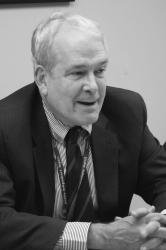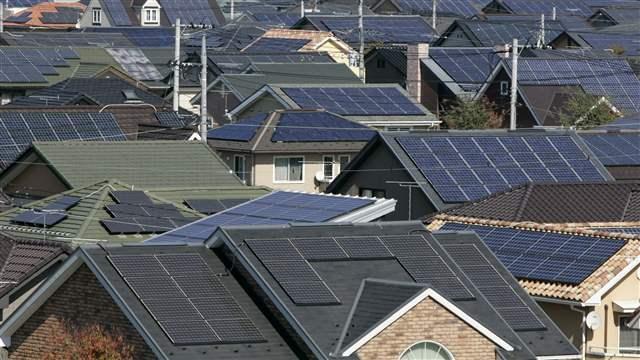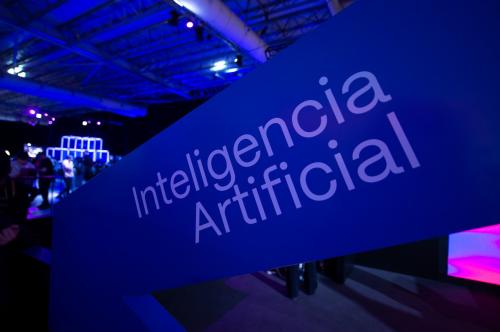The oil and gas boom in the United States is overshadowing another revolution in electricity. Changes are occurring that will alter dramatically the fundamental structure and operations of this century-old industry, and electricity will play a greater role in the national economy and energy sector with attendant effects on national security.
The Slow Burn
Recently, there has been considerable attention given to the threats posed to the traditional utility business model by distributed generation (DG). Dire headlines abound: “Why the U.S. power grid’s days are numbered,” “Renewables turn utilities into dinosaurs of the energy world,” “Adapt or die? Private utilities and the distributed energy juggernaut,” and “The end of utilities.”[1] This theme is not limited to the U.S.: in a recent strategy paper RWE (Germany’s second largest utility) noted that “the growth of German photovoltaics constitutes a serious problem for RWE which may even threaten the company’s survival.”[2]
But in reality, distributed generation represents the most recent trend in a decades-old evolution of a changing industry. Since the late 1970s, utilities in the U.S. have been undergoing changes that cumulatively have chipped away at the traditional regulated, vertically-integrated industry model. This erosion of monopoly control started with generation after the 1978 passage of Public Utility Regulatory Policies Act (PURPA) spurring the build-out of non-utility independent power generation: In 2011, this represented about 40 percent of total installed capacity in the U.S. The Energy Policy Act of 1992 and several subsequent Federal Energy Regulatory Commission (FERC) orders created open access to the grid and led to the formation of independent system operators (ISOs) and regional transmission organizations (RTOs) governing transmission primarily in the Northeast and the Midwest. Starting in the late 1990s, the restructuring of utilities in 15 states and the District of Columbia further eroded the revenue earning asset base of the industry by unbundling generation.
Now the last bastion of the utility’s monopoly business – distribution – is under attack. Solar photovoltaic PV distributed generation is being deployed at such a fast pace that many stakeholders see a disruptive trend impacting the financial health of the utilities over the long-term.[3] In particular, utilities are increasingly advocating an overhaul of the net metering policy originally established to incentivize distributed generation. When the first net energy metering policy was passed in Minnesota in 1983, renewable energy sources contributed a negligible part of the country’s energy mix. Although the percentage is still quite low, the growth in the past few years has been exponential. According to the Lawrence Berkeley National Laboratory, cumulative PV capacity in the U.S. reached 500 MW in 2007, doubled by 2009, and then doubled again in 2010 and 2011.[4] The popularity of solar reflects several factors, including falling solar prices, state mandates requiring renewable energy and distributed generation, a policy emphasis on de-carbonizing the electricity portfolio, a growing interest in local self-reliance, and a business model that takes advantage of the net metering tariff mechanism.
All of this has taken place amid a decoupling of GDP growth from electricity consumption. During the 1960s, a 1 percent increase in GDP corresponded to about a 2 percent increase in electricity sales. By the 1990s, a 1 percent increase in GDP accounted for less than 1 percent growth in electricity sales. In a recent report, the Natural Resources Defense Council highlighted that since 2000, “for first time in modern history, the national growth rate for electricity consumption has dropped below that of the population for an extended period.”[5] This decoupling has come as a result of rapid advancements in technology, including the expanded use of highly efficient natural gas combined cycle plants, and the widespread deployment of energy efficiency programs. In fact, while the number of electronic devices in our homes has grown rapidly over the past 10 years, the overall electricity use associated with them has not grown that much owing to efficiency gains. So, in fact, the same amount of electricity provides far more value today than it did a decade ago. Improvements in efficiency have allowed the financial health of utilities in many jurisdictions to be decoupled from the quantity of electricity sold, edging some utilities away from a commodity-based business model. As the demand curve plateaus (described below), it will be increasingly important to reward utilities for generating more electricity with less. Thus far electricity providers have not been systematically rewarded for investments in efficiency in the same way as they have been for increasing generation capacity.
Turning up the heat
Now, however, several major trends are converging to accelerate potentially far more existential changes with wide-ranging implications.
First, over the next several decades the real price of electricity will rise in stark contrast to the past 50 years where the real price of electricity has been flat. Meanwhile replacing or retiring virtually every power plant by 2050 (except hydro facilities) including 70 percent of the nation’s existing carbon-free generating capacity, modernizing the grid, meeting stricter environmental regulations and renewable mandates, and upgrading the transmission and distribution infrastructure are all converging to exert upward pressure on utility expenditures. For example, the annual capital expenditures of U.S., investor-owned utilities in 2012 and 2013 have been around $95 billion, the most of any sector, and the Brattle Group has estimated that $1.5 to $2 trillion in investment is required by 2030 in the U.S. electric utility industry, mostly in generation.[6]
Second, rising costs are occurring against a flat to declining demand for electricity. The U.S. Energy Information Administration forecasts that electricity demand will increase just 0.9% per year by 2040, representing a marked difference from growth rates in most of the 20th century. Slower economic growth and the accelerated deployment of energy efficiency programs, codes and standards, and demand response are flattening demand. At the same time, the structure of demand is changing with the enormous increase in information and communications technologies. As one analyst has noted the “always-on” digital economy is driving the need for more resilient and reliable power supply for microprocessors, data centers, and an array of home and office devices.[7]
Third, we’re witnessing the increasing threat of cyber attacks – a recent congressional survey of the industry revealed that many utilities report being “subject to daily, frequent or constant cyber attacks.”[8] Perhaps not receiving as much attention is the threat of physical attacks on infrastructure, some of which have already caused smaller scale outages around the country.
Fourth, the increasing frequency of extreme weather events, such as Hurricane Sandy, is forcing utilities to spend more on grid resiliency and reliability. This is extremely important to customers in today’s electricity driven economy. Given these trends, utilities are working to optimize the grid, deploy sensors across the grid, manage around problem areas, and create a more flexible grid. In some cases, utilities are looking at micro-grids and “islanding” parts of the power system, particularly around critical facilities.
Fifth, rising costs, flat demand and increasing concerns related to the integrity, security, and resiliency of the grid mentioned above are occurring as the costs of solar and wind technologies decline and policy support for renewable energy has increased. These trends are driving greater interest in distributed energy resources (DER), a combination of various distributed sources of power production, energy storage, and demand-side resources. With the increasing deployment of DER, the electricity system will become less reliant on large, centralized generation, and become more decentralized with many households, institutions, and localized mini- or micro-grids producing power for their own use and/or possibly selling back to the grid.
Proponents of DER and greater decentralization tout an array of benefits including improved efficiency of the distribution system, reduced strain on the grid during peak demand periods, providing back-up generation to improve system reliability, offsetting costs of new or upgraded transmission and generation assets, reducing environmental impacts of power generation, decreasing the vulnerability of the civilian grid to disruption and attack, and as a resource for the defensive and offensive operations of the U.S. military. Critics and skeptics of DER highlight the high cost of distributed sources of power generation, including integration and management costs, and the danger of subsidies and incentives for DER technologies creating an unfair burden for customers not deploying them. This latter issue is raising specific concerns amongst utilities that the net metering approach in place today in most states results in a significant and unfair cost shifting from DG customers to non-DG customers. This has spawned a variety of efforts to seek better ways to value the costs and benefits of DG, in particular rooftop solar PV.
Sixth, other technology innovations are driving decentralization of electricity and empowering consumers with greater knowledge and choice in their energy use. The proliferation of grid modernization technologies—generally referring to the convergence of energy technology and information communications technologies —represents the intersection of the physical power layer (transmission and distribution system) with a data transport and control layer (communications and control), and an applications layer (applications and services) that enables two-way information and power flow between utilities and consumers. As a result, consumers are becoming more actively engaged, becoming what some call “prosumers,” both producers and consumers of electricity.
Seventh, all of the above trends are occurring simultaneously and rapidly, outstripping the adequacy and relevance of existing regulatory and business models. There is a consensus that a new regulatory paradigm is needed. It should address not just efficient rate design, but more broadly a greater degree of flexibility critical to ensuring that utilities and consumers are properly incentivized to help meet the requirements of the transformation underway. As America’s Power Plan states, “the power sector increasingly demands a service business rather than a commodity business,” and thus a move is required from the existing regulatory model that asks “did we get what we paid for?” to a performance-based model that asks “did we get what we wanted?”[9] Regulatory and pricing reform will allow utilities to adopt technologies faster, as the existing discrepancy between the cycle of adoption (three to five years) for utilities and the rate of technological improvement (six to 18 months) is a major source of inefficiency and lost opportunity.
The existing utility business model is also under threat: the transformative trends described above are creating opportunities for a wide array of new players providing services. Some call this “disintermediation,” or “edge power” where services such as data analytics, DG, storage, demand response, energy efficiency, and financing, are provided by non-utility entities along the value chain from generation to customer end-use. How are utilities reacting and what future utility business models could emerge? Most analysts suggest three pathways along a wide spectrum of utility activity and involvement in the market: In one model, the utility serves as a wires and battery company providing only the grid and back-up power; in the second a utility plays the role of “optimizer” or “integrator” of grid services and new services and applications; and in the third, the utility becomes an energy services company engaging in a full range of activities on both sides of the meter.[10] It remains to be seen what models or hybrids may evolve, but it appears many utilities recognize the challenge and opportunity: for example, in the most recent global power and utility survey conducted by PwC, 82 percent of the companies participating viewed distributed power generation as an “opportunity” vs. 18 percent as a “threat.”[11]
The Emerging Market Challenge
Finally, while distributed generation will be incorporated in the U.S. and other industrialized countries, the real application is in the developing world. This is where the most critical learning will occur and where costs will come down even faster. Most importantly, however, distributed generation for people with no access or limited access to electricity addresses an issue that is in the U.S. national security interest.[12] There are 1.3 billion people in developing countries – or 20 percent of the world’s population – who have no access to electricity. By some estimates as many as 2 billion others have very limited access, perhaps one fan and several light bulbs. This energy poverty has highly detrimental effects on the quality of life: per capita consumption of electricity is linked to a variety of human development indicators such as life expectancy, school enrollment, the empowerment of women and girls, availability of life saving vaccines, and access to clean water. Lack of access to electricity also undermines economic development, fueling political instability and the creation of failed states. Without electricity and other forms of commercial energy to support economic growth and modernization, the pathway to jobs and the middle class for hundreds of millions of young people in the developing world will be stymied, sowing growing dissatisfaction.
In sum, we can no longer afford to take electricity for granted. Most people probably couldn’t say how many kWh they use in a month, what they pay for a kWh, what fuel source is used to generate the electrons they use in their home or business, and how those electrons get to their flat screen TVs, iPhones, air conditioners, and DVRs. Most assuredly, most could not fathom – or accept – the indignity of daily life without power that is the norm for billions throughout the developing world, and how this intolerable situation goes beyond a humanitarian issue to affect our long-term national security interests. Nevertheless, electricity is undergoing dramatic changes at the nexus of the economy, environment and national security. Indeed, we are in the midst of an electricity revolution arguably more transformative than shale gas and tight oil.
On October 8, 2013 the Energy Security Initiative (ESI) launched its first Global Electricity and Technology Roundtable, chaired and moderated by Dr. Charles K. Ebinger, Director and Senior Fellow at ESI, and Mr. Jim Rogers, Chairman of Duke Energy, and a Trustee of Brookings. The purpose of this and future roundtables is to gather a cross-section of stakeholders to discuss major issues challenging the industry. In this essay, Dr. Ebinger and Nonresident Senior Fellow John P. Banks summarize and expand on key issues raised during the October roundtable. They emphasize that major transformative trends are underway, and that electricity is assuming far more prominence at the nexus of the environment, economy, and national security.
[1] See the following: “Why the U.S. power grid’s days are numbered,” by Chris Martin, Mark Chediak, and Ken Wells August 22, 2013, Bloomberg Businessweek; “Renewables turn utilities into dinosaurs of the energy world, by Geert De Clercq, March 8, 2013; “The end of utilities?,” by Sara Murphy, Motley Fool, March 25, 2013; “Adapt or die? Private utilities and the distributed energy juggernaut,” by Chris Nelder, April 15, 2013, Greentech Media.
[2] “RWE sheds old business model, embraces transition, by Karel Beckman, Energy Post, October 21, 2013.
[3] “Disruptive Challenges: Financial Implications and Strategic Responses to a Changing Retail Electric Business,” Edison Electric Institute, January 2013.
[4] “Utility Business Models in a Low Load Growth/High DG Future: Gazing into the Crystal Ball?” Charles Goldman, Andy Satchwell, Peter Cappers, and Ian Hoffman, Lawrence Berkeley National Laboratory, Committee on Regional Electric Power Cooperation (CREPC)/State-Provincial Steering Committee (SPSC) Meeting, Boise, ID, April 10, 2013.
[5] “America’s (Amazingly) Good Energy News,” NRDC, October 2013.
[6] Capex figures from Edison Electric institute, October 2013. Other figures from Marc Chupka et al., “Transforming America’s Power Industry: The Investment Challenge 2010-2030,” The Brattle Group (Washington DC: The Edison Foundation, 2008).
[7] “Information technology has created a new electric demand paradigm,” by Mark Mills, Forbes, January 9, 2013
[8] “Electric Grid Vulnerability: Industry responses reveal security gaps,” U.S. House of Representatives, May 21, 2013.
[9] “America’s Power Plan: Rethinking Policy to Deliver a Clean Energy Future,” Hal Harvey and Sonia Aggarwal, 2013.
[10] Peter Fox-Penner discussed this at length in his book Smart Power: Climate Change, the Smart Grid, and the Future of Electric Utilities (Island Press, 2010). Models are also discussed more recently in “America’s Power Plan: Utility and Regulatory Models for the Modern Era,” Ronald Lehr, 2013.
[11] See “Energy Transformation: the Impact on the Power Sector Business Model,” PWC, 2013.
[12] For a more detailed look at this issue see “Electricity Access in Emerging Markets,” by John P. Banks and Charles K. Ebinger, in Jan H. Kalicki and David L. Goldwyn (eds.), Energy and Security (2nd ed.): Strategies for a World in Transition (Washington, DC and Baltimore: Wilson Center Press and Johns Hopkins University Press, 2013).
The Brookings Institution is committed to quality, independence, and impact.
We are supported by a diverse array of funders. In line with our values and policies, each Brookings publication represents the sole views of its author(s).





